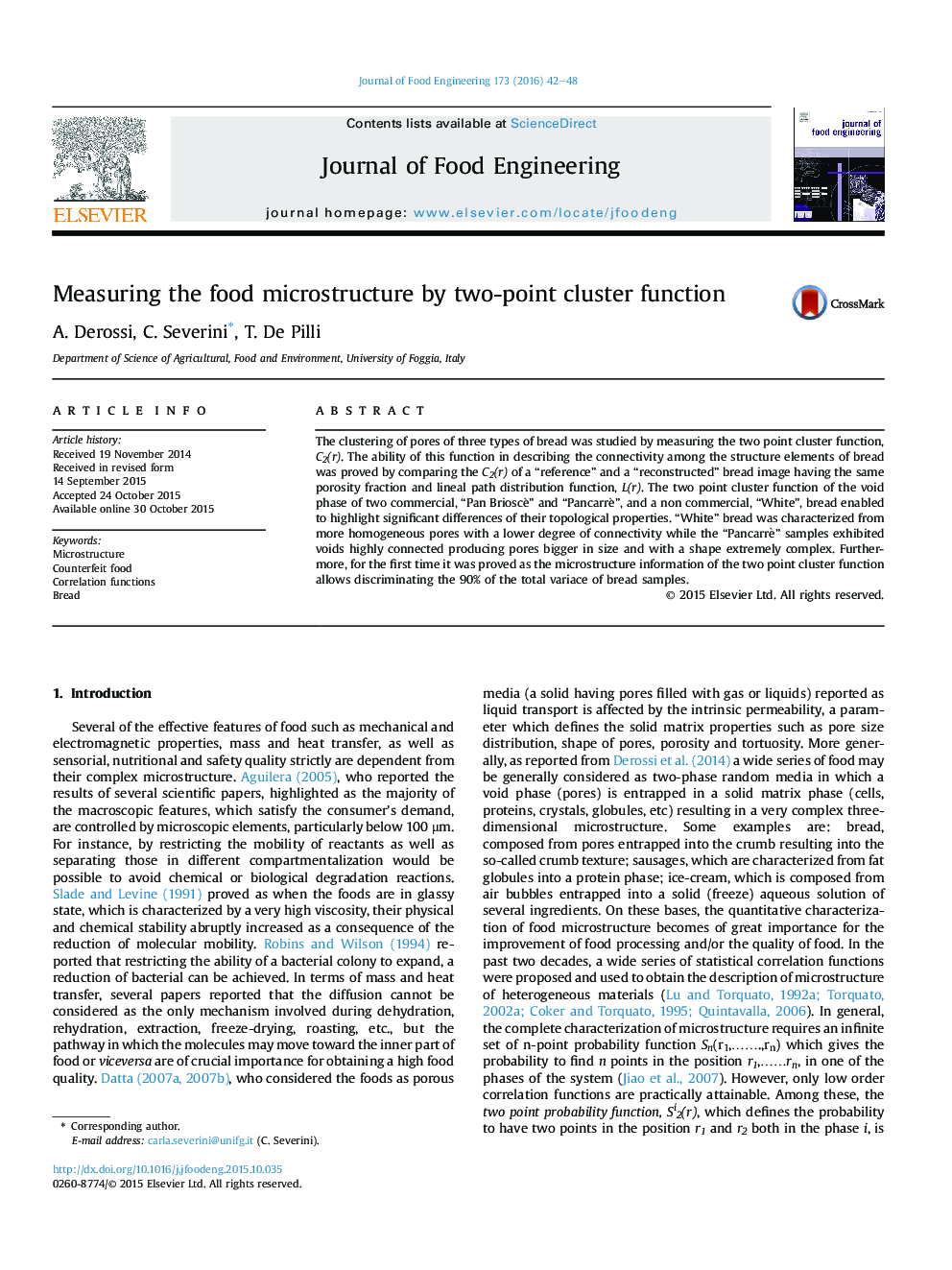| Article ID | Journal | Published Year | Pages | File Type |
|---|---|---|---|---|
| 222760 | Journal of Food Engineering | 2016 | 7 Pages |
•The clustering of food microstructure was studied by two-point cluster function.•Two types of breads were studied: the first manually prepared and the second locally purchased.•A specific algorithm based on burning method was implemented.•Significant difference in terms of clustering of void phase were highlighted.•The 90% of the bread samples were discriminated by using the clustering information.
The clustering of pores of three types of bread was studied by measuring the two point cluster function, C2(r). The ability of this function in describing the connectivity among the structure elements of bread was proved by comparing the C2(r) of a “reference” and a “reconstructed” bread image having the same porosity fraction and lineal path distribution function, L(r). The two point cluster function of the void phase of two commercial, “Pan Brioscè” and “Pancarrè”, and a non commercial, “White”, bread enabled to highlight significant differences of their topological properties. “White” bread was characterized from more homogeneous pores with a lower degree of connectivity while the “Pancarrè” samples exhibited voids highly connected producing pores bigger in size and with a shape extremely complex. Furthermore, for the first time it was proved as the microstructure information of the two point cluster function allows discriminating the 90% of the total variace of bread samples.
